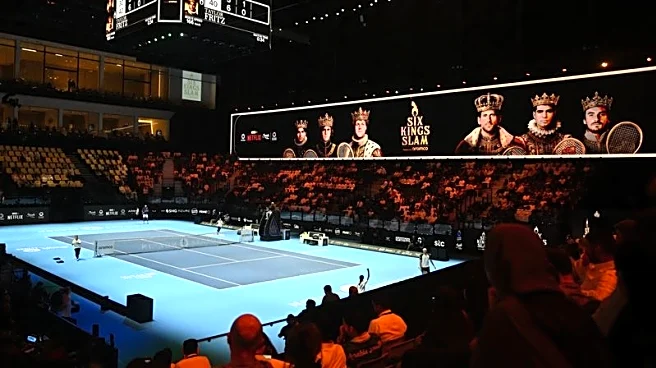What's Happening?
During the Paris Art and Design Week, a significant focus was placed on the intersection of technology and human experience in design. Susan Kare, an American artist known for her work at Apple, participated
in a panel for Ledger, a digital security company. She emphasized the enduring importance of human-centric design, even as technology becomes more pervasive. Ian Rogers, Ledger's Chief Experience Officer, echoed this sentiment, highlighting the value of human connection over technological interactions. The event also marked Apple's first direct participation in the fair, commissioning artists to create works using iPads. This year's Design Miami.Paris showcased a blend of technological innovation and a return to designs that emphasize human experience and nostalgia.
Why It's Important?
The emphasis on human connection in design, despite the growing influence of technology, reflects a broader societal trend. As technology becomes more integrated into daily life, there is a counter-movement towards preserving human experiences and emotional connections. This shift has implications for industries reliant on design, such as consumer electronics, fashion, and digital media, as they may need to balance technological advancements with human-centric approaches. Companies that successfully integrate these elements could gain a competitive edge by appealing to consumers' desires for authenticity and emotional engagement.
What's Next?
The design industry may see a continued trend towards integrating technology with human-centric elements. Companies might explore new ways to incorporate emotional and experiential aspects into their products and services. This could lead to innovations that prioritize user experience and emotional resonance, potentially influencing future design trends across various sectors. Stakeholders in the design and technology industries will likely monitor consumer responses to these developments, adjusting their strategies to align with evolving preferences.
Beyond the Headlines
The focus on human connection in design raises ethical considerations about the role of technology in society. As designers and companies navigate this landscape, they must consider the impact of their creations on human interactions and well-being. This could lead to discussions about the ethical responsibilities of designers in shaping the future of human-technology relationships, potentially influencing regulatory and industry standards.














